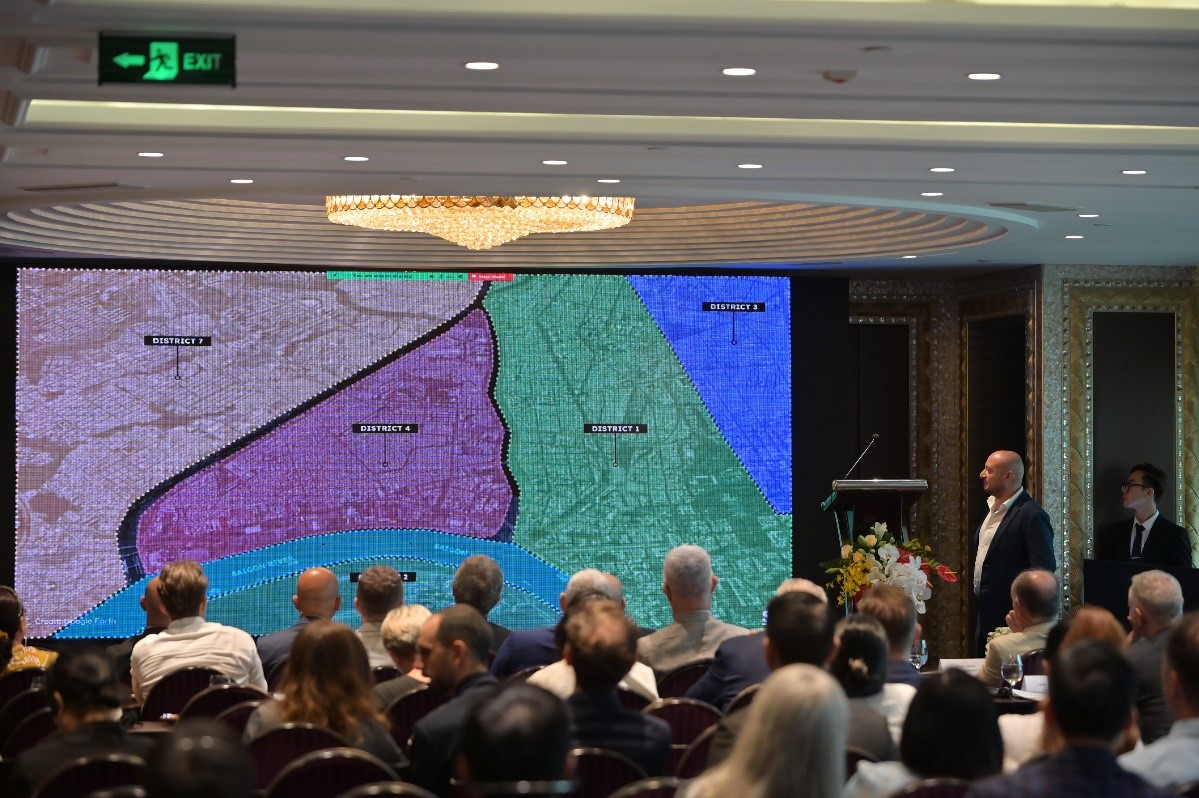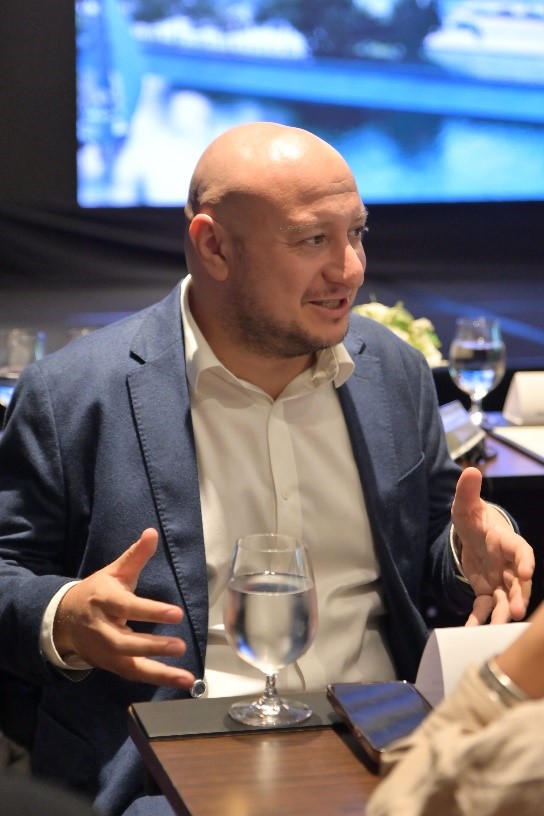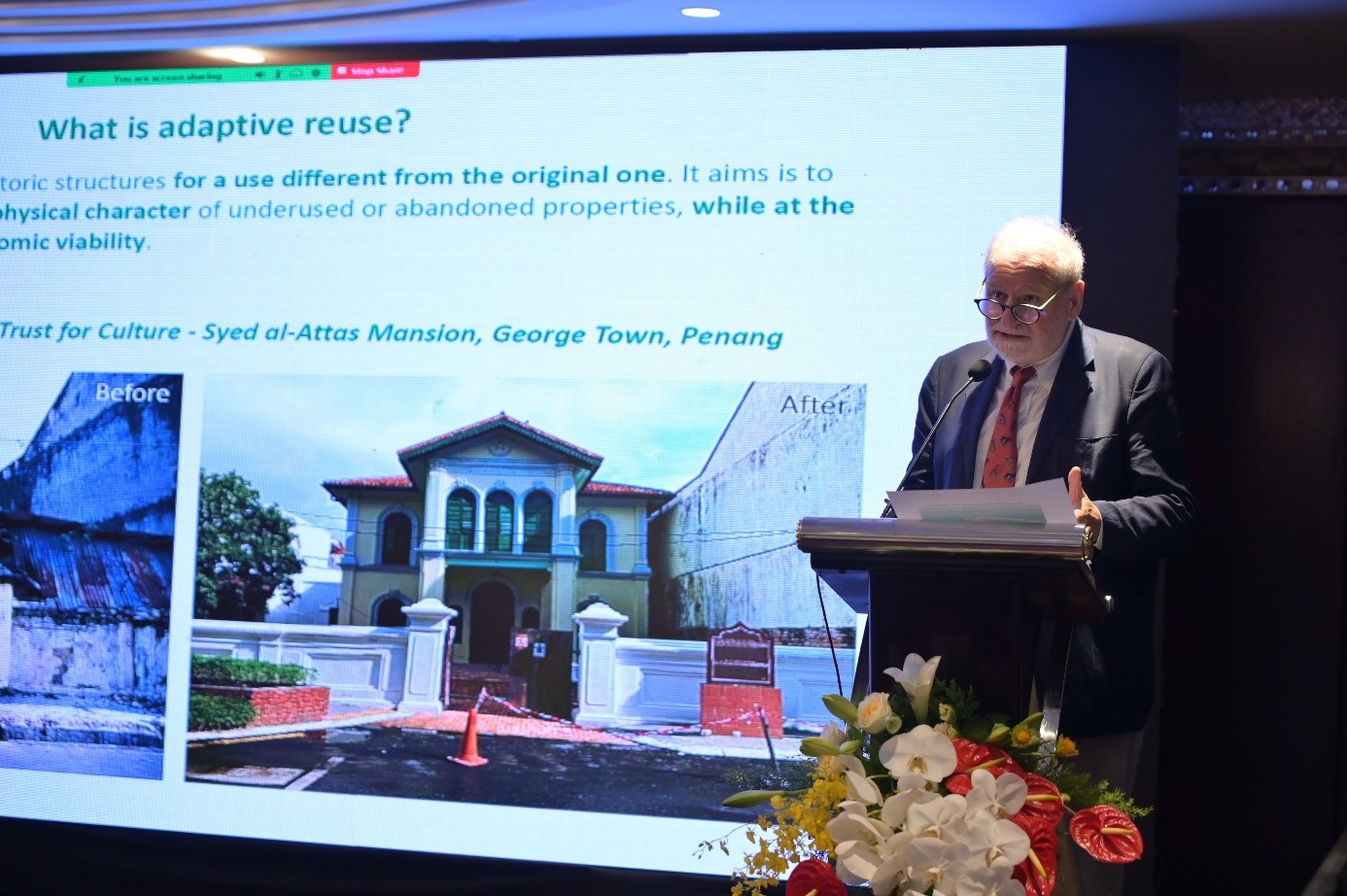Hosted by S&A
Architecture, the 6th Heritage Preservation & Economic Development (HPED)
called upon the nation to be aware of the irreparable loss of Vietnam's
collective identity, which needs to be nurtured through bringing new life to
spaces, along with the opportunities this brings for tourism to Vietnam's cities.
The event included a comprehensive series of keynote speeches and panel
discussions about sustainable development that focuses deeply on the
interrelationship of municipal – private entities – community.

Picture of honored guests,
keynote speakers, and panelists (from left to right): Andy Stiff, Prof. Marco
Abbiati, Tom Bosschaert, H.E Antonio Alessandro, Prof. Francesco Siravo, Paul
Tonkes, Mark Ratcliff, Chi Nguyen, Prof. Luigi Croce, H.E. Enrico Padula, Luigi
Campanale and wife, Ly Nguyen, Alex Crane, Romeo Orlandi, Fabio De Cillis,
Manuela Spiga.
In his presentation, Luigi Campanale, CEO and Design
Director of S&A Architecture, showcased the re-envisioned of District
4 Waterfront through an academic proposal of the former Saigon Commercial Port
- a research done by S&A Architecture and RMIT University Vietnam (read the
full article here).
. 
Vietnam is developing
at such an incredibly fast pace. With the abundant amount of investment pouring
into this country, it also creates burdens for the city (old building).
However, “the future does not exist without the past, it is all the people
living and buildings built in the past that contribute to the identity of one’s
city, making it different and memorable” – according to Luigi during his
interview with the press, stressing the importance to maintain the historical
values of Ho Chi Minh City. His point of view on Vietnam’s endangered
heritage received similar sentiments from the speakers and audiences attending
the event. H.E. Antonio Alessandro – Ambassador of Italy to Vietnam and H.E.
Enrico Padula – Consult Italy in HCMC both expressed the similarity between
Italy and Vietnam for its abundant historical sites and rich legacies and the
potential development of tourism based on preserving heritage.

Luigi Campanale – CEO & Design Director of S&A
Architecture
While discussing
heritage preservation, “adaptive reuse” practice was discussed throughout all
panel discussions. As defined by Professor Siravo – Conservation Architect and
Planner, the concept was the process of repurposing historic structures for a
use different from the original one. This would bring “a new life” for
underused or abandoned properties while maintaining their economic viability,
and contributing to sustainable development by recycling used materials
(usually 30% compared to new construction), saving infrastructure costs, and
reducing carbon footprint and pollution. Several successful examples around the
globe were named and dissected during the conference such as the Shigar Fort
(Pakistan), Syed al-Attas Mansion (Malaysia), Darb al-Ahmar (Egypt),
Collingwood (Australia), Tai Kwun (Hong Kong), Columbia Circle (China).

Despite the success of adaptive reuse implementation, this event
also listed the difficulties in implementation as there is a lack of
legislative framework. Additionally, the skill sets and training required are
one of the most difficult challenges which urge the important role of academies
and educational institutes to prepare for future generations who will soon lead
the country.
Professor Luigi Croce – President of the Venice Architecture
Association, the event moderator, concluded the event by saying that although
the concept of adaptive reuse was not new, it was long forgotten for many
reasons. Whilst the majority perception still opts for the use of new materials
due to their “convenience” and “technology advancement”, it is critical to
provide education and enhance the relationship between government, private
investors and the community. He hoped that through the initiative of HPED event
and the support of both Italy's public and private organization, Vietnam would
be the main player of ASEAN for the sustainable development that is based on
heritage and cultural values.